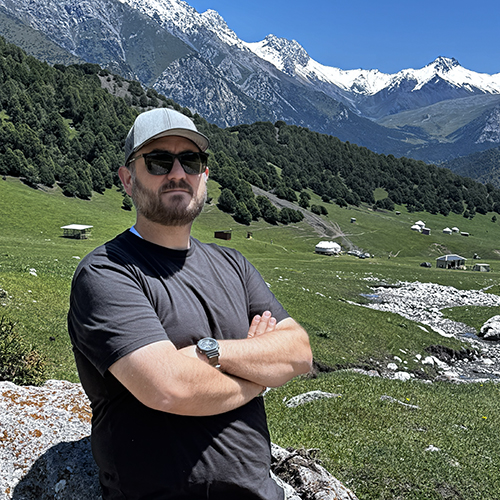More than one million people die each year from malaria. Even those taking medicine to avoid the disease may be out of luck—some strains of malaria parasite are becoming resistant to existing drug treatments.
But there may be new treatments available in the near future, thanks to the work of a research team that includes Michael Gelb, UW professor of chemistry, and Wesley Van Voorhis, UW professor of medicine. Gelb and Van Voorhis are among a group of scientists who were honored recently with a Project of the Year Award by the Medicines for Malaria Venture.
Gelb’s malaria research builds on his previous research into proteins. In the early 1990s, he discovered that molecules called prenyl groups anchor proteins to the membranes in human cells. While the prenyl groups are essential to the functioning of proteins, one such protein called Ras causes cancer when it becomes mutated. Drug companies, recognizing this, have been developing cancer treatments that inhibit prenylation.

At the same time, Gelb’s lab has been studying parasites that cause malaria and sleeping sickness. Gelb began to wonder whether those parasites might also contain proteins with prenyl groups. “We knew that if they did, there was the potential to piggyback on work already being done for cancer drugs,” explains Gelb.
Recent genomic information provided some answers, confirming that malaria parasites contain protein farnesyl-transferase (PFT)—a protein also found in human cells, and that attaches prenyl groups to proteins.
With that information, scientists in Gelb’s lab isolated the PFT from the parasite, allowing them to test various inhibitors on living parasites as well as in vitro.
To obtain the inhibitors, Gelb contacted Andrew Hamilton, a colleague at Yale University who spearheads one of the largest university efforts to create PFT inhibitors for cancer treatment.
What followed was good news and bad news. “We could show early on, using Hamilton’s compounds, that they were quite toxic to these parasites,” says Gelb. “But those compounds are metabolized in animals too quickly to be used as drugs. They need to hang around in the blood for hours, not minutes.”
A more suitable compound was being made at Bristol-Myers Squibb (BMS). David Floyd of BMS agreed to provide the compound—actually a few hundred compounds in its PFT inhibitor series—to the UW team. Gelb’s lab has been synthesizing them for use in testing and Van Voorhis has been testing them in parasites. “We’re also making new compounds,” says Gelb, “because we haven’t found one good enough yet to take into clinical trials.”
Results in mice have been promising, however. “We now know that we have a compound that cures malaria in mice,” says Gelb. “We know the concept is good.”
A major grant from the Medicines for Malaria Venture, funded in part by the Gates Foundation, will help fund the next phase of research. Gelb hopes that they will have a compound suitable for human clinical trials in about two years.
If the compound is successful, it will be a significant development in the treatment of malaria.
“Most of the other antimalarial drugs currently in development are based on existing treatments for which resistance has cropped up,” says Gelb. “This is the first new approach in more than a decade.”
More Stories

Through Soil Science, an Adventure in Kyrgyzstan
Chemistry PhD alum Jonathan Cox spent most of 2025 in Kyrgyzstan, helping farmers improve their soil—and their crops—through soil testing.

A Sports Obsession Inspires a Career
Thuc Nhi Nguyen got her start the UW Daily. Now she's a sports reporter for Los Angeles Times, writing about the Lakers and the Olympics.

The Public Impact of Private Cities
Geography major Edwin Bai has researched private cities, developed by individuals and corporations, that "take the libertarian idea of low government regulation to the maximum."